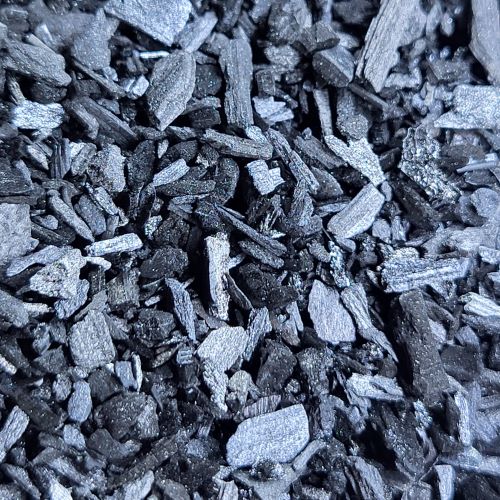Biochar, a form of highly porous carbon created through the process of pyrolysis, has been praised for its incredible potential to improve soil health and sequester carbon. However, to maximize its benefits, biochar needs to be "charged" before introducing it to your garden. In this blog, we'll explore what charging biochar means, why it's essential, and how you can harness this powerful soil amendment to transform your garden into a thriving oasis.
Understanding Biochar and Its Potential
Biochar is the product of heating organic matter, such as wood or crop residues, in a low-oxygen environment. This process converts the organic matter into a stable form of carbon, which can be added to the soil. When properly charged, biochar can provide numerous benefits to your garden, including:
-
Carbon Sequestration: Biochar is an excellent way to lock carbon into the soil, helping mitigate climate change by reducing atmospheric carbon dioxide levels.
-
Improved Soil Structure: It enhances soil aeration and water-holding capacity, reducing compaction and promoting healthier root systems.
-
Nutrient Retention: Biochar can hold onto essential nutrients, preventing them from leaching away, making them available for plants over time.
-
Microbial Habitat: It provides a habitat for beneficial soil microorganisms, helping maintain a balanced and diverse soil ecosystem.
The Importance of Charging Biochar
Raw, uncharged biochar, though a promising soil amendment, doesn't fully realize its potential without the charging process. Charging biochar involves infusing it with essential nutrients and microbial life, ensuring it becomes an active and beneficial addition to your garden soil. Here's why it's crucial:
-
Nutrient Buffer: Raw biochar can initially compete with plants for nutrients as it starts absorbing them from the soil. Charging biochar with nutrients ensures it doesn't deprive your plants during the adjustment period.
-
Microbial Activation: Charging introduces beneficial microorganisms, such as mycorrhizal fungi and bacteria, which colonize the biochar. These microbes aid in nutrient cycling and enhance plant growth.
How to Charge Biochar for Your Garden:
-
Mix with Compost: Blend your biochar with compost or worm castings. This charges the biochar with essential nutrients and beneficial microorganisms.
-
Incorporate Nutrient-Rich Materials: You can also charge biochar by blending it with nutrient-rich organic materials like kelp meal, bone meal, or aged manure.
-
Compost Tea: Soaking your biochar in compost tea can help introduce microbial life to it.
-
Wait and Mix: Allow your charged biochar to sit for a few days or weeks, ensuring the nutrients and microorganisms have ample time to permeate it.
Using Charged Biochar in Your Garden:
Once you've charged your biochar, you can incorporate it into your garden in several ways:
-
Mix it into the soil: Blend charged biochar into your garden soil or potting mix to improve soil structure and nutrient-holding capacity.
-
Top Dressing: Apply charged biochar on the soil surface, which slowly releases nutrients to the root zone.
-
Amend Planting Holes: When transplanting or planting new trees or shrubs, amend the planting hole with charged biochar to provide a nutrient-rich environment for the roots.

